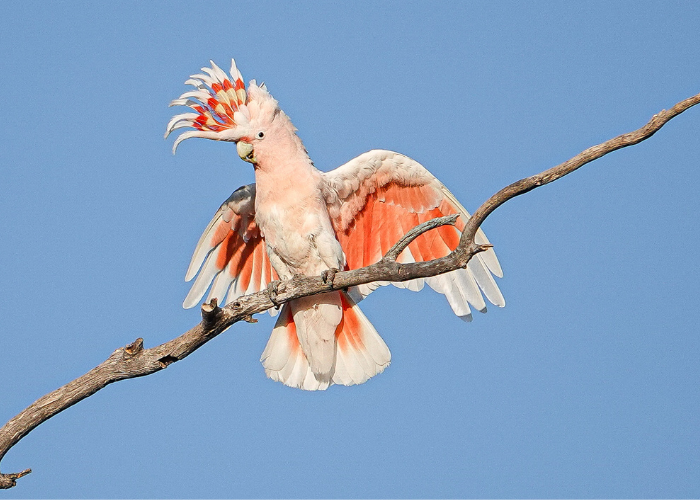March 3 marks the United Nations’ World Wildlife Day – a day to celebrate the unique and wondrous animals that live on earth and the critical action needed to protect them into the future. This year’s theme is Connecting People and Planet – Exploring Digital Innovation in Wildlife Conservation. Learn how Australian Wildlife Conservancy (AWC) and our partners use digital innovation to help protect native wildlife species across Australia.
Tracking Quolls with high-tech drone sensor technology
Last year, AWC ecologists deployed Wildlife Drones’ high-tech tracking systems to monitor the movements of Quolls as they settled in at Mt Gibson Wildlife Sanctuary, on Badimia Country in Western Australia. Quolls were the tenth species to be reintroduced at Mt Gibson – the greatest number of species ever restored to a single site in Australia.
The drone sensors are the first in the world with the ability to radio-track many animals simultaneously from the air and provide real-time data to teams on the ground. This technology has changed the game, as a great tool for monitoring quolls’ behaviour and locating individuals quickly for check-ups.

Using ground-penetrating radar to locate critically endangered Northern Hairy-nosed Wombat
Researchers at Richard Underwood Nature Reserve (RUNR) in Queensland are harnessing cutting-edge ground-penetrating radar (GPR) tech to unveil the mysterious world of the critically endangered Northern Hairy-nosed Wombat. AWC field ecologists, The Wombat Foundation, Subsurface Mapping Solutions, and Queensland’s Department of Environment and Science joined forces to create real-time 3D maps of wombat burrows at RUNR.
This breakthrough is a pivotal step in the Northern Hairy-nosed Wombat Recovery Action Plan, enhancing our understanding of their habitat for a brighter, wombat-filled future.

QUT researchers use AI and bioacoustics to eavesdrop on endangered Pink Cockatoos
Researchers from the Queensland University of Technology (QUT) are using artificial intelligence (AI) and bioacoustic technology to investigate the behaviour and distribution of the Eastern Pink Cockatoo – an Australian bird was recently uplisted to endangered.
Following the deployment of acoustic sensors, they have identified hotspots of calling activity and a breeding hollow on Australian Wildlife Conservancy’s (AWC) Bowra Wildlife Sanctuary (Kunja country), near Cunnamulla in Queensland.
Professor Susan Fuller from QUT’s School of Biology & Environmental Science said the research would help provide a better understanding of the species’ breeding activity and requirements for survival.

Developing and training AI models to ID Australian wildlife species
We’re developing and training Artificial Intelligence models to accurately identify up to 120 Australian wildlife species, which could include the endangered Northern Bettong, near threatened Western Quoll and vulnerable Great Desert Skink.
While camera traps have revolutionised biodiversity monitoring, a single camera can capture thousands of images that still need to be manually reviewed by ecologists. Our ‘Species Classifier’ models will be open source and come with how-to-use guides and information about our camera trap image processing pipeline, methods, and tools.
This project is possible thanks to the Australian Government’s Innovative Biodiversity Monitoring Grants Program funding.

Support Australian Wildlife Conservancy's science-led conservation work and safeguard the future of Australia's native species
Donate Now